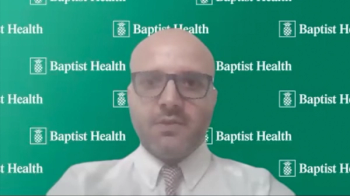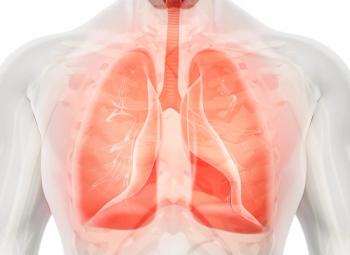
Galinpepimut-S Completes Phase 3 REGAL Interim Analysis in AML
Interim phase 3 results revealed a median survival of at least 13.5 months with galinpepimut-S vs 6 months with standard of care in acute myeloid leukemia.
The Independent Data Monitoring Committee (IDMC) has recommended that the phase 3 REGAL trial (NCT04229979) evaluating galinpepimut-S (GPS) in patients with acute myeloid leukemia (AML) continue without modification after the trial passed the event-driven interim analysis for efficacy, futility, and safety, according to a news release from the drug’s developer, SELLAS Life Sciences Group.1 The IMDC additionally confirmed that GPS exceeded the predetermined futility criteria and noted no safety concerns associated with its use.
Select blinded data revealed that fewer than 50% of enrolled patients were confirmed deceased approximately 10 months after enrollment and an approximate median follow-up of 13.5 months (range, 1-36+). Additionally, pooled median survival appeared to be at least 13.5 months compared with an expected 6-month survival in a similar patient population. An additional blinded analysis of early immune response in a random sample of patients showed an 80% GPS-specific immune response rate.
“The interim results represent a major step forward in the treatment of AML, offering hope for patients in remission,” Yair Levy, MD, director of Hematologic Malignancies Research at Texas Oncology Baylor University Medical Center, said in the news release.1 “I am very hopeful that we will see a new standard of care in treating [patients with] AML based on the outcomes we have observed in previous GPS trials.”
The open-label phase 3 REGAL trial randomly assigned patients with AML who have achieved complete remission following second-line salvage therapy 1:1 to receive either galinpepimut-S or best available treatment.2 Best available treatment consisted of 4 options: observation and possible palliative management with hydroxyurea (Droxia); decitabine (Dacogen) or azacitidine (Vidaza); venetoclax (Venclexta); and/or low-dose cytarabine (Ara C).
Treatment with GPS consisted of a maximum of 15 total injections broken into 3 phases. The immunization induction phase, accounting for the first 6 injections, occurred every 2 weeks followed by a 4-week period of no treatment. For the early immune booster phase, accounting for injections 7 through 12, treatment occurred every 4 weeks followed by a 6-week period with no treatment. A final late immune booster phase, accounting for the final 3 doses, had treatment occurring every 6 weeks.
GPS was admixed with adjuvant montanide and given as a subcutaneous injection, with 70 μg of subcutaneous sargramostim (GM-CSF) injections administered the day of and before GPS treatment. The 4 best available therapy options were administered as monotherapy or as a combination of agents per investigator’s choice.
The study’s primary end point was overall survival (OS). Secondary end points included leukemia-free survival (LFS); 6-, 9-, and 12-month OS rates; 6-, 9-, and 12-month LFS rates, and minimal residual disease.
Eligibility criteria for enrollment included adult patients with a diagnosis of AML according to World Health Organization criteria and cases due to antecedent hematological disorder progression. Additionally, patients had to be in second morphological remission for relapsed AML, have more than 300 lymphocytes/μL, have an ECOG performance status of 0 to 3, must not have been a candidate for allogenic stem cell transplant, and have a life expectancy of greater than 6 months to enroll, among other criteria.
Patients ineligible for enrollment included those with concurrent anti-AML systemic therapy; prior clinically significant allergic reactions to study agents; receipt of continued CR2/CRp2 induction agents; or receipt of any consolidative or maintenance therapy, investigational agent, systemic corticosteroid therapy, or other immunosuppressive therapy within 4 weeks or 10 half-lives prior to start of treatment.
References
- SELLAS Life Sciences announces positive outcome of interim analysis for its pivotal phase 3 REGAL trial of GPS in acute myeloid leukemia. News release. SELLAS Life Sciences Group. January 23, 2025. Accessed January 23, 2025. https://tinyurl.com/2xeep52x
- Galinpepimut-S versus investigator's choice of best available therapy for maintenance in AML CR2/CRp2 (REGAL). ClinicalTrials.gov. Updated April 9, 2024. Accessed January 23, 2025. https://tinyurl.com/zx22t7bv
Newsletter
Stay up to date on recent advances in the multidisciplinary approach to cancer.



















































































